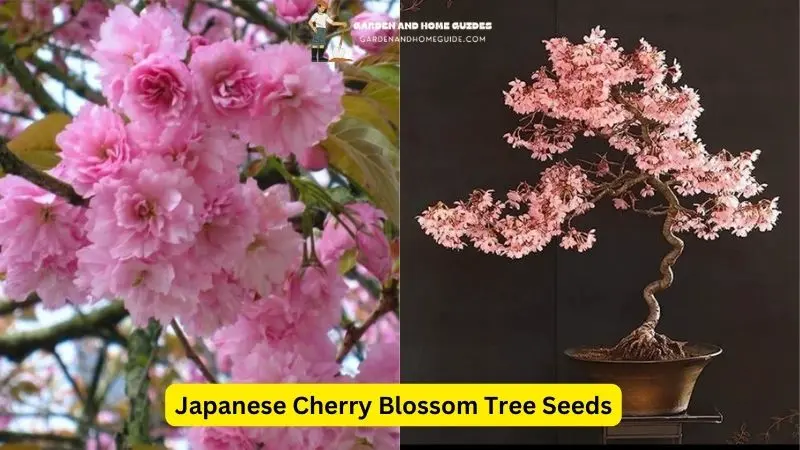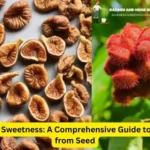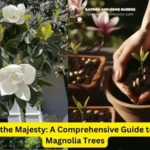Life Tips
Japanese Cherry Blossom Tree Seeds
The delicate pink and white blossoms of the Japanese cherry tree, known as sakura, are a symbol of spring, renewal, and fleeting beauty. These trees, with their graceful branches and ephemeral blooms, hold a special place in Japanese culture, inspiring countless poems, songs, and artistic expressions. But before the breathtaking spectacle of a cherry blossom festival, there lies a journey that begins with a tiny seed, carrying within it the promise of a future spring.
The seeds of the Japanese cherry blossom tree, Prunus serrulata, are small, brown, and hard-shelled, much like the seeds of other fruit-bearing trees. They are encased within the fleshy fruit, a small, dark red cherry known as sakurambo. This fruit, while not as widely cultivated as its larger, sweeter counterparts, holds a unique significance in Japanese culture, symbolizing the ephemeral nature of life and the beauty of impermanence.
Let’s learn more about Japanese cherry blossom tree seeds with gardenandhomeguide.com in the article below!
Japanese Cherry Blossom Tree Seeds
The journey of a cherry blossom seed begins in the heart of the tree, nestled within the ovary of the flower. As the flower fades, the ovary develops into the sakurambo, gradually ripening and softening. Within this fruit, the seed matures, absorbing nutrients and preparing for its own journey.
The dispersal of cherry blossom seeds is primarily carried out by birds and animals. Attracted by the sweet, slightly tart flavor of the sakurambo, these creatures consume the fruit and then deposit the seeds, often far from the parent tree, through their droppings. This natural process ensures the spread and genetic diversity of the cherry blossom trees.
However, the journey of a cherry blossom seed is not always a smooth one. The hard shell of the seed acts as a protective barrier, preventing germination until the right conditions are met. These conditions include:
- Moisture: The seed requires adequate moisture to soften the outer shell and allow the embryo inside to begin its growth.
- Temperature: Cherry blossom seeds prefer a cool, moist environment for germination. Ideal temperatures range from 5°C to 15°C.
- Light: While some light is necessary for photosynthesis, too much direct sunlight can inhibit germination.
In nature, these conditions are often met during the spring and early summer months, when the soil is moist and the air is cool. However, in controlled environments, such as nurseries and gardens, these conditions can be artificially created.
The germination process of a cherry blossom seed is a delicate and intricate one. Once the seed absorbs enough moisture, the embryo inside begins to develop, sending out a tiny root that anchors itself in the soil. Soon after, a stem emerges, pushing through the soil and reaching towards the sunlight. This process can take several weeks or even months, depending on the environmental conditions.
As the seedling grows, it develops leaves and branches, gradually taking on the characteristic shape of a cherry blossom tree. The young tree is vulnerable to pests, diseases, and harsh weather conditions, but with proper care and attention, it can thrive and eventually produce its own beautiful blossoms.
The journey of a cherry blossom seed is not just a biological process; it is also a cultural and historical one. For centuries, Japanese people have cultivated and cherished cherry blossom trees, planting them in gardens, parks, and along roadsides. These trees have become an integral part of Japanese culture, symbolizing the fleeting beauty of life and the importance of appreciating the present moment.
The practice of planting cherry blossom trees, known as sakura-zue, has a long and rich history. It is believed that the tradition began during the Heian period (794-1185), when cherry blossom trees were planted in the gardens of noble families. Over time, the practice spread throughout Japan, becoming a symbol of national identity and cultural pride.
The annual cherry blossom festival, known as hanami, is one of the most celebrated events in Japan. During this festival, people gather under the blooming trees, enjoying picnics, socializing, and appreciating the ephemeral beauty of the blossoms. Hanami is a time for reflection, celebration, and a reminder of the impermanence of life.
The journey of a cherry blossom seed from its humble beginnings within the sakurambo to its eventual transformation into a majestic tree is a testament to the resilience and beauty of nature. It is a journey that embodies the spirit of Japan, a land that values both the fleeting beauty of the present moment and the enduring legacy of its cultural heritage.
Beyond its cultural significance, the Japanese cherry blossom tree also holds practical value. Its wood is prized for its durability and beauty, making it ideal for furniture, woodworking, and construction. The blossoms themselves are used to create a variety of products, including tea, jam, and even cosmetics.
The cultivation of cherry blossom trees has also played a role in promoting international relations. In the early 20th century, Japan gifted cherry blossom trees to the United States as a symbol of friendship and goodwill. These trees, planted in Washington, D.C., have become a beloved landmark, attracting visitors from around the world each spring.
The journey of a cherry blossom seed is a testament to the interconnectedness of life and the power of nature. From the tiny seed to the majestic tree, each stage of the journey is a reminder of the beauty and resilience of the natural world. The cherry blossom, with its fleeting beauty and enduring legacy, continues to inspire and enchant people around the world, reminding us to cherish the present moment and appreciate the wonders of nature.
The Importance of Conservation
While the cherry blossom tree is a symbol of beauty and resilience, it is also facing threats from climate change, urbanization, and invasive species. The changing climate is causing warmer temperatures and more extreme weather events, which can disrupt the delicate balance of the cherry blossom’s lifecycle. Urbanization is leading to the loss of habitat and the fragmentation of populations, making it more difficult for cherry blossom trees to thrive. Invasive species, such as the emerald ash borer, can damage or even kill cherry blossom trees, further threatening their survival.
It is crucial to take steps to conserve cherry blossom trees and ensure their continued existence for future generations. This includes:
- Planting new trees: By planting new cherry blossom trees, we can help to replenish populations and expand their range.
- Protecting existing trees: We must protect existing cherry blossom trees from damage and disease, ensuring their survival and continued growth.
- Raising awareness: Educating the public about the importance of cherry blossom trees and the threats they face is essential for fostering conservation efforts.
- Supporting research: Research into the biology and ecology of cherry blossom trees is crucial for developing effective conservation strategies.
By taking these steps, we can help to ensure that the journey of a cherry blossom seed continues for generations to come, allowing us to continue to enjoy the beauty and cultural significance of these remarkable trees.
The Symbolism of the Cherry Blossom
The cherry blossom, with its delicate beauty and fleeting lifespan, has become a powerful symbol in Japanese culture. It represents a range of concepts, including:
- Ephemerality: The short lifespan of the cherry blossom, which blooms for only a few weeks each year, serves as a reminder of the fleeting nature of life and the importance of appreciating the present moment.
- Renewal: The cherry blossom also symbolizes renewal and rebirth, as it emerges from the cold winter months, bringing with it the promise of spring.
- Beauty: The cherry blossom is renowned for its beauty, inspiring countless works of art, poetry, and music.
- Impermanence: The cherry blossom’s ephemeral nature is also a reminder of the impermanence of all things, both beautiful and fleeting.
- Community: The tradition of hanami, where people gather under the blooming trees, fosters a sense of community and shared appreciation for nature’s beauty.
The cherry blossom, with its multi-layered symbolism, continues to resonate with people around the world, reminding us of the beauty and fragility of life and the importance of cherishing the present moment.
Conclusion
The journey of a Japanese cherry blossom seed is a story of resilience, beauty, and cultural significance. From its humble beginnings within the sakurambo to its eventual transformation into a majestic tree, the cherry blossom embodies the spirit of Japan, a land that values both the fleeting beauty of the present moment and the enduring legacy of its cultural heritage. As we continue to appreciate the beauty of the cherry blossom, let us also remember the importance of conservation, ensuring that these remarkable trees continue to thrive for generations to come.






